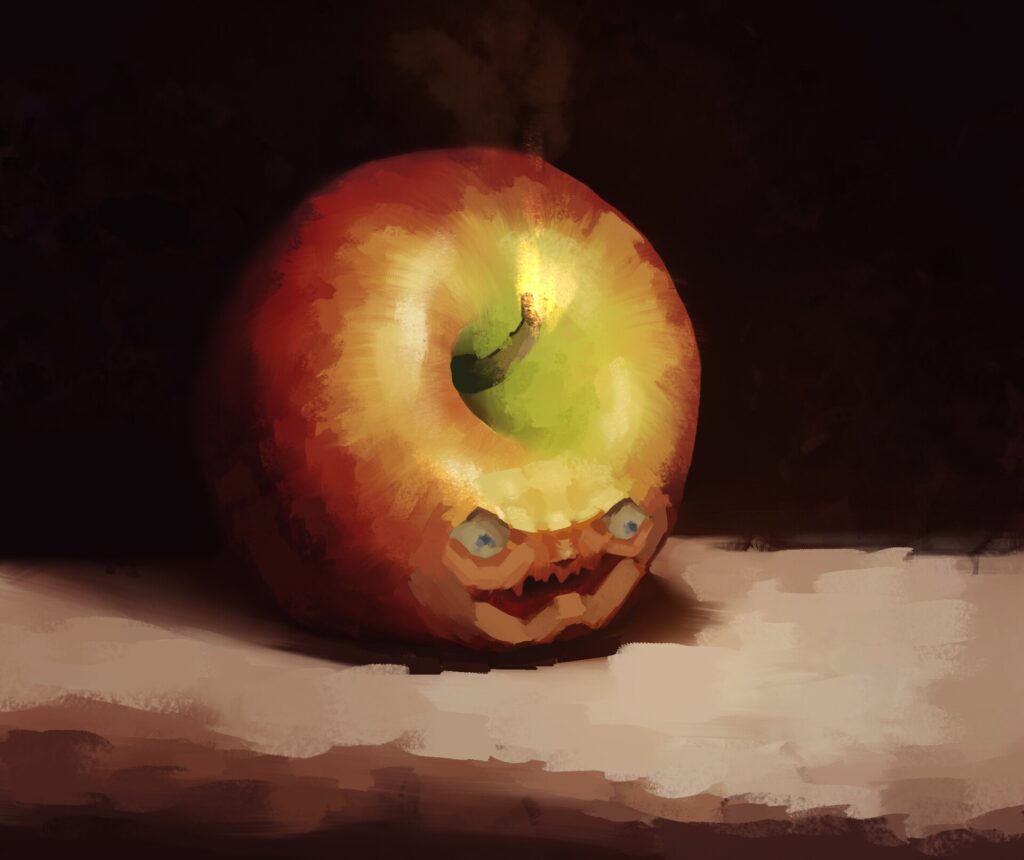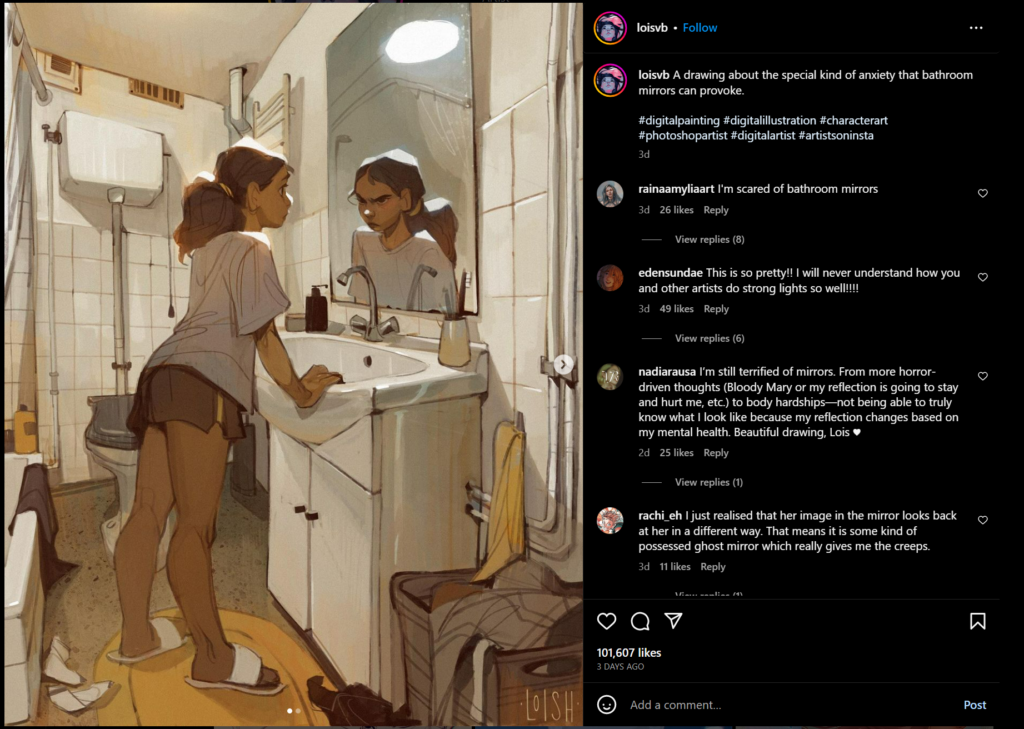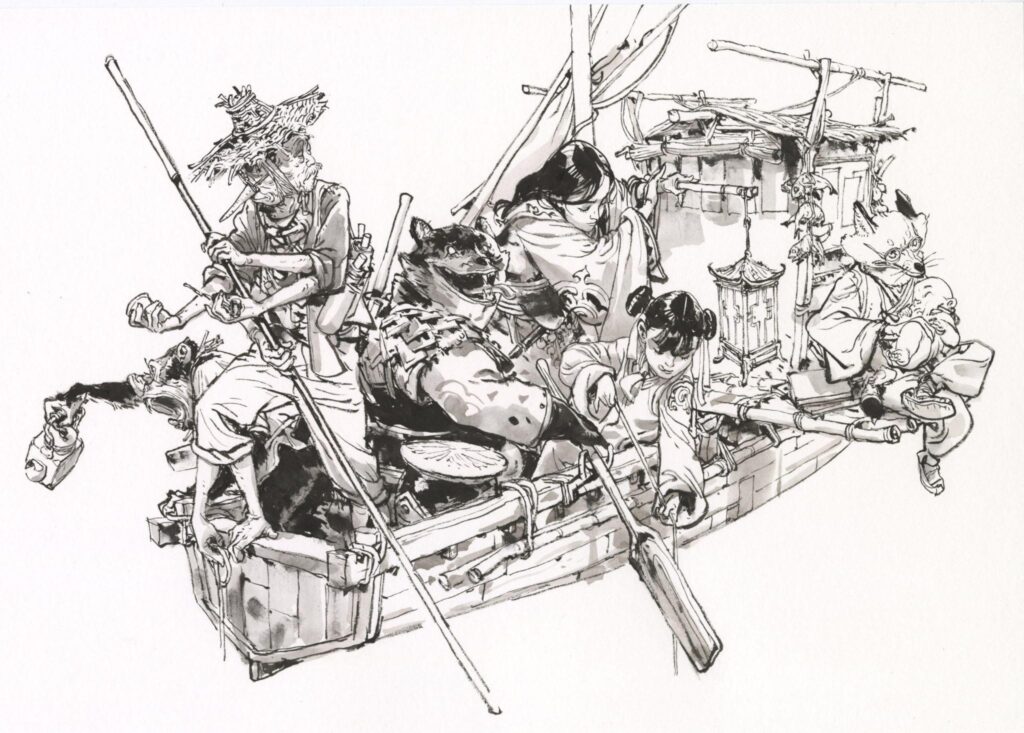by Daniel Wiseman
When starting out as an artist in the digital age of social media and trends, it can be easy to fall into the idea that once you have the “perfect” understanding of anatomy, perspective, light, and color then you will finally produce “good art.” While technical skill as an artist is a valuable asset, the power of storytelling is another skill that often gets neglected. But it is critical to being an artist that makes an impact. In this blog we’re going to explore the how storytelling can shape your art!
Why is Story So Important?

Story connects the audience and your art. Rarely do people consume things at face value, especially art. If you want your audience to connect with and care about your piece, telling a story is the best way to do it!
When you create your own pieces, it’s best to keep these questions in mind:
- What themes am I trying to convey in my piece? (Loss, Inspiration, Adventure, etc.)
- Who is my intended audience?
- How do I want my audience to feel?
- How can my piece relate to or be familiar with my intended audience?
Daniel McVicker from Art Business News wrote an article that does a good job explaining how to engage with your audience online and building a community centered around your art.
What Makes Good Storytelling?

A good story in art usually captivates the viewer. It makes your audience focus less on the technical details of your work and more on the deeper meaning of the piece overall.

Stuart Mackay – ArtStation Even a simple face can take a simple painting study to a new level of visual interest.
Of course, this is where your technical skills will come into play as well. If you have something visually inaccurate or poorly designed, there’s a chance it will be too distracting to connect with people the way you intended. Luckily, this video by Film Riot can fill you in on the simple artistic and design principles that set your composition up for telling a story. While the video does focus on film, many of the topics explored can be translated to any visual medium.
How Visual Artists Tell Stories
From painting to sculpture, there’s story and context behind everything. So we’re going to take a look at how successful and renowned artists use storytelling to create amazing pieces.

Artist: Loisvb
In this piece by Loisvb, she connects with her audience by sharing the anxiety she has around mirrors and her art reflects that. What makes this piece successful is that it sparks conversation. Her audience responds with their own meanings and stories centered around the piece.

Artist and Illustrator: Kim Jung-Gi
Master Artist and Illustrator Kim Jung-Gi is very well known for creating very detailed and story filled illustrations just from his imagination. When you look at Jung Gi’s work, you can’t help but be taken away by what’s going on in his work. That’s the power of story.

Artist: Leonardo Da Vinci
This piece by Leonardo Da Vinci, titled “The School of Athens,” depicts various groups of philosophers, mathematicians and other great minds. Even in this painting, you can see how the subjects interact with each other, the perspective and composition, and the background make this work more interesting.
In this video by Samdoesarts, he shares some advice on being more effective at creating a story in your art.
How Storytelling Shapes Your Art
Hopefully you can see that just by adding some story elements to your piece, you can make your work a lot more interesting. Try exploring the sources mentioned in the video and practice telling a meaningful story in your pieces during you next visit to the Ignite Studio. Happy Making!


